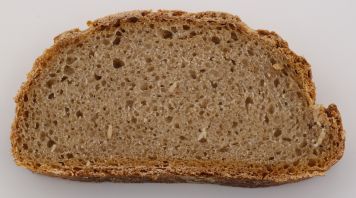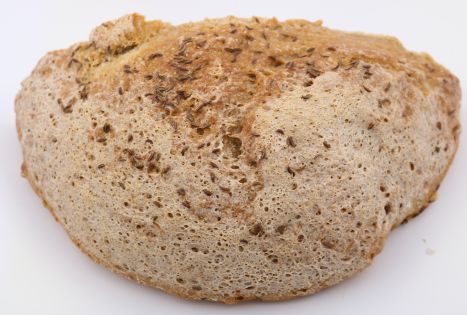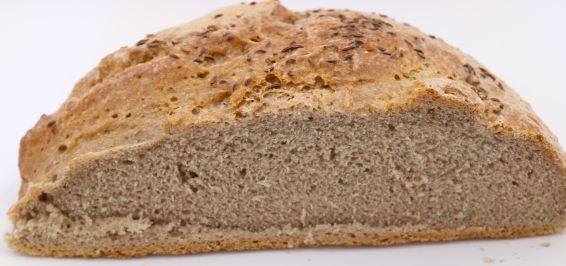Home › Forums › Baking — Breads and Rolls › Coming Through the Rye
- This topic has 138 replies, 11 voices, and was last updated 1 year, 11 months ago by
Mike Nolan.
-
AuthorPosts
-
April 16, 2020 at 5:17 pm #22919
Mike, I see that BakerAunt posted 1 hr. 28 minutes ago, but her post and all the others have disappeared from this thread. Is this a website snafu or my computer?
April 16, 2020 at 5:26 pm #22920Italian cook go back to previous page 1.
April 16, 2020 at 6:01 pm #22923There's a glitch in WordPress or BBPress that occurs when the number of posts in a thread exactly equals the number per page, which I currently have set at 75 I'm not sure if it occur at further multiples, we don't have many threads that get to 150 posts.
When a thread goes over the page size, you have to select the page number from the link at the top of the thread, otherwise it just shows you the page with the most recent post.
I'm tempted to set the page size back to the default of 25, I think they load faster that way.
April 16, 2020 at 6:05 pm #22924There were no page numbers when Italian Cook posted, but once she did post, then the page numbers appeared again. In magical terms, it breaks the Word Press Spell.
April 16, 2020 at 7:39 pm #22925Thanks, Joan, for telling me what happened & BakerAunt for clarifying. The first question I ask myself when baking a non-KAF recipe is, "What brand of flour did the creator of this recipe use?" If it's a cake or cookie, I always go with Gold Medal. Thanks, BakerAunt, for the info you gave on this subject. My answer to the question never centers on protein. It's always based on what I think the creator figured the masses would turn to for the recipe.
April 24, 2020 at 9:37 pm #23166Report on Kassel Rye (Ginsberg, pps 332-335):
I was tempted to call 'no joy' on this recipe and not give much of a report; Ginsberg says it is technically challenging, and that certainly appeared to be the case for me, but I've never been one to gloss over my less successful bakes.
To start with, I'm not sure my new starter was fully ready for this recipe, though it looks and smells like the last one did. I'll give it a few more feedings before I try it again.
The recipe uses a 67% hydration sponge, so it should have been similar to the final dough, which is at 65% hydration. But it seemed quite dry, and it just sort of sat there overnight when it should have doubled in size. So, I added some more water and another teaspoon of starter and gave it another night. It was plenty active this time, maybe too active, I'll explain further later on.
Of course I subtracted the extra water from the final dough. It came together fairly easily, and the final dough weight was pretty much spot on. In retrospect, the dough might have been a little too slack, though.
The bulk rise instructions didn't exactly specify how much it should rise, though it did increase by about 50%. The final proof was done in a basket lined with my couche.
Here's what it looked like after proofing.
When I turned the proofed dough out onto the parchment, it flattened out a bit. Docking the dough didn't seem to deflate it much.
It bakes at a high temperature with steam for the first 10 minutes, then the temperature is lowered. After another 30 minutes or so the top is sprayed with water and it is baked another 5-10 minutes; spraying it with water is what is supposed to bring out a shiny finish that should have a red tint to it.
My steam setup wasn't working quite right, later I figured out that the tubing had gotten pinched a bit. I wound up squirting about 50 cc's of water by hand into the steam pan, but that means opening the door, letting at least some of the steam escape. I don't know how much impact that had.
After the top was sprayed with water, it still wasn't getting very dark, so I let it bake a bit longer. It was already pretty solid and the internal temperature was already 208, I think it may have already been overbaked by then.
Ginsberg says the recipe is fully risen when it goes into the oven, and I can confirm that was the case, as there was little or no oven spring. It did blow out a bit on one side, so it seems likely that the final proof needed more time, underproofed dough often results in a blowout as the water in the dough turns to steam.
The cross section was no more than 2 1/2 by 4 1/2 at the widest point, the piece below is 2 x 4 inches. I was expecting it to be more like 3 x 5.
I didn't weigh the loaf before cutting into it.
The crust is very thick and REALLY dense and hard to cut through. The inner crumb is fairly tight. It smelled very good, but the taste is well beyond what I'd call 'mild sour', and there's a slight bitter aftertaste. I'm tempted to attribute the sourness mostly to the sponge having sat for a total of 40 hours with twice as much inoculant and the bitter aftertaste to being overbaked.
I did double-pan it so the bottom doesn't appear burnt.
I'm OK with the bread, I think it is a bit too sour for my wife. The crust is too stiff to be used as a sandwich bread. The crust may be too stiff to toast.
So, what have I learned for the next time?
1. My starter may not be ready for prime time yet.
2. Don't give the sponge 2 days to rise.
3. Make sure it is fully proofed before prepping it for the oven.
4. Lower the oven temperature. (This is something I've noted in other recipes, and so have others baking recipes out of this book.)Attachments:
You must be logged in to view attached files.April 24, 2020 at 10:24 pm #23176Mike;
Your last bread looks like it has measles! What is the purpose of docking the dough? Do you think the flavor or the texture will change by tomorrow? I've notice that on some wheat breads, that breads which seem too soft are stiffer the next day, and crusts soften as they absorb moisture from the inside of the bread.April 24, 2020 at 10:33 pm #23178I guess docking it is an alternative to slashing it, but I'm not sure why it is done that way, perhaps it's just traditional for this bread. According to Ginsberg, this loaf doesn't have a lot of oven spring, maybe slashes wouldn't open up well?
April 25, 2020 at 8:03 am #23188Thanks for the detailed report, Mike. I've occasionally let a sponge go too long, and that sourness is pronounced. I didn't realize that underproofing could cause a blowout and why it usually happens with loaves where I'm not sure if they have fully risen. I always have a slight blowout on that pumpkin-rye bread recipe from Ginsberg's blog, even though I slash it (which the recipe does not state).
I don't recall if Ginsberg mentions what kind of oven he uses. I'm still learning about my Wolf oven and the best rack position at which to bake various items. I have learned to check most recipes five minutes early, and with Bundt pans, I've been baking at 325F rather than the usual given temperature of 350F.
Maybe the bread would make good croutons?
April 25, 2020 at 8:33 am #23191Mike, I enjoyed your detailed report and appreciate your post even though you don't feel fully successful. Question: I've heard the term "blow out" before but never knew what it meant. On your picture under your discussion of blow out, is the blown out part the section near the bottom of the picture that is a different color and texture? If it isn't, do you have a picture that shows the blow out?
I noticed something similar to that on dinner rolls last year. I didn't know what it was. Now, I'm thinking it was a slight blow out from a second rise of underprooofed dough.
April 25, 2020 at 9:42 am #23194This loaf may not be the best bread to illustrate a blowout, which basically is when the expanding dough splits the surface in a place other than where you wanted it to.. That's why loaves are slashed, to give the dough a place to expand by design rather than by chance.
When dough is underproofed, it still has more expansion to do, and when you add oven heat it will do so faster than the surface of the dough can expand to keep up with it, so it ruptures.
April 27, 2020 at 10:22 pm #23282The Kassel rye is in a plastic bag and has softened up a bit, but it is still assertively sour. I'll have to make this again at some point, to see if I can get the red finish.
My wife described the initial texture as like 'cutting wood'.
May 4, 2020 at 7:38 pm #23540Report on New York Corn Rye (Ginsberg pps 87-89)
I've never understood the value of a cornstarch glaze, and I guess I still don't. It always seems to produce a white crust, which just seems wrong for rye bread:
The recipe went together easily enough, in fact I expected more problems getting it to firm up into a tight ball than I had. It calls for using 30 ml of water in a bowl to wet the loaf before the bulk rise, and I think that's too much. You go from the bulk rise direct into the oven after decanting the dough onto a baking pan and some gentle shaping, there is no final rise.
It bakes for over an hour, and that produces a fairly dense outer crust, though the interior is fairly soft. The loaf did soften a bit overnight, if I make it again I think I'd wait a day before cutting it, because it didn't cut very easily at first:
The taste has a mild sourdough tang to it; toasting it doesn't really improve the flavor.
Attachments:
You must be logged in to view attached files.May 4, 2020 at 9:22 pm #23545Mike your bread looks nice!
May 4, 2020 at 9:34 pm #23549The loaf is huge, over 2 1/2 pounds. I cut it into 4 quarters.
-
AuthorPosts
- You must be logged in to reply to this topic.







